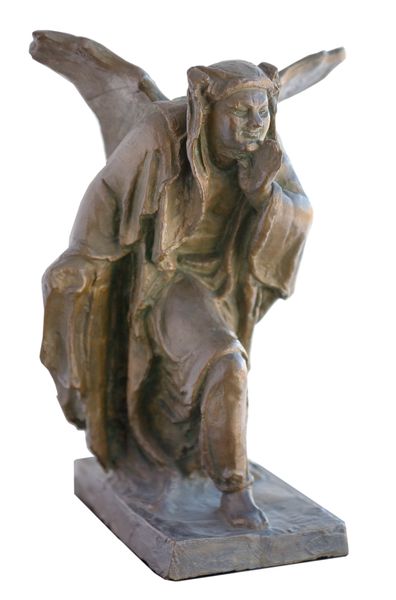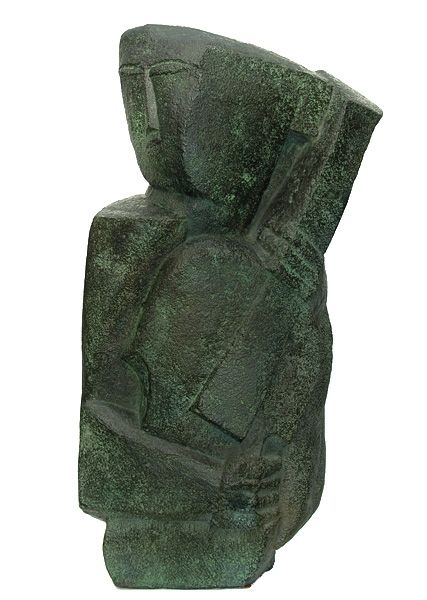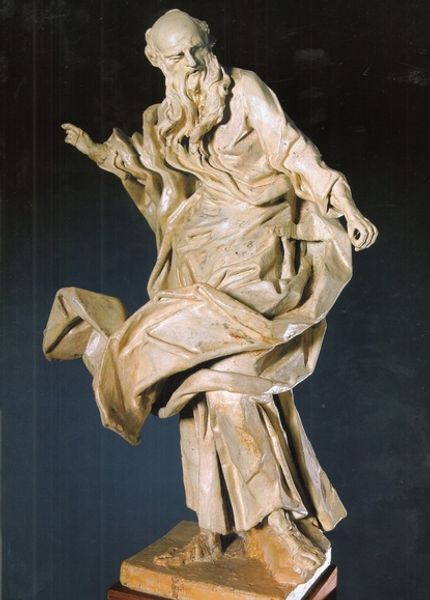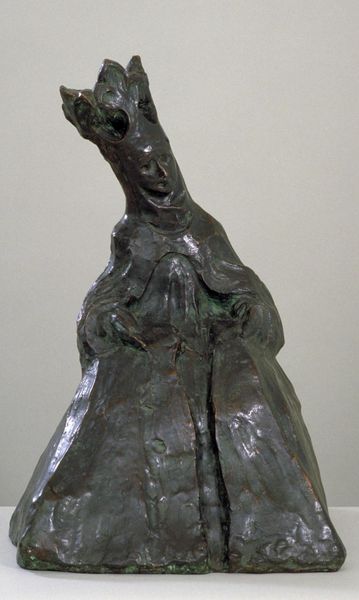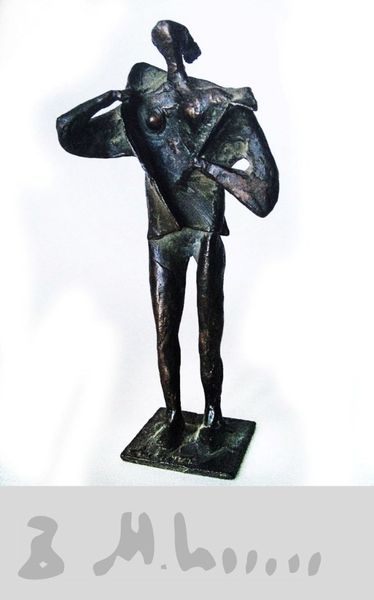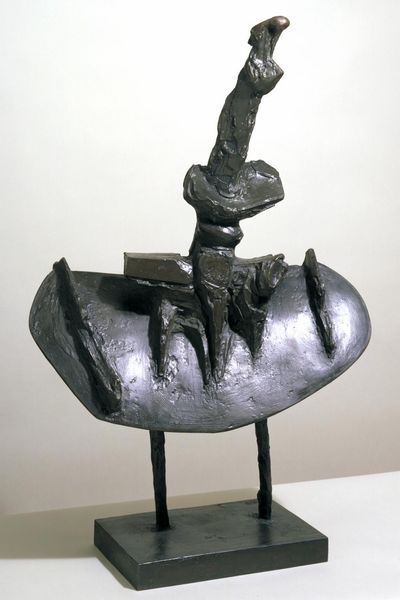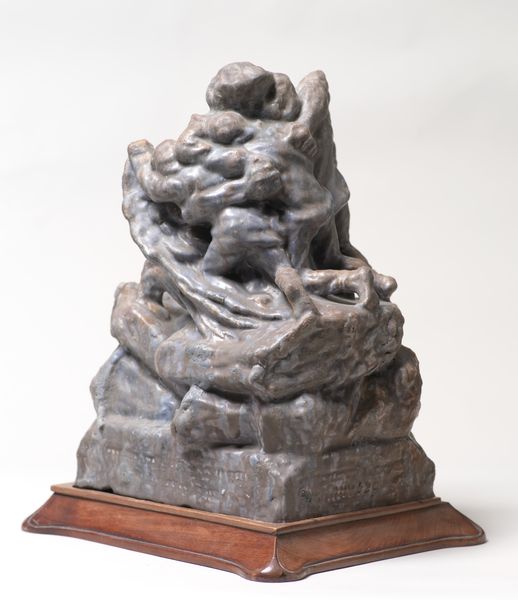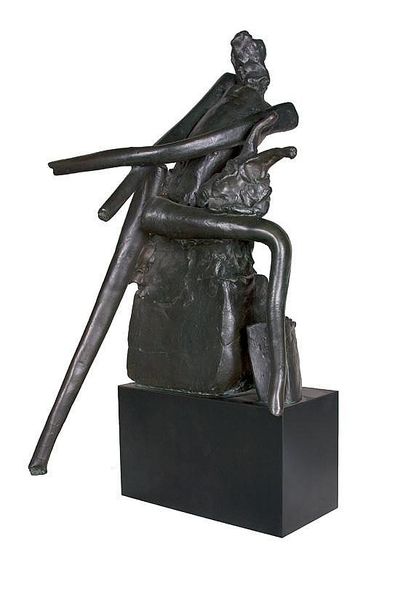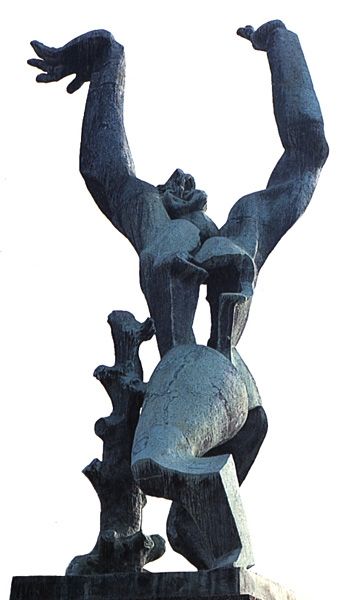
carving, sculpture, wood
#
portrait
#
cubism
#
carving
#
sculpture
#
geometric
#
sculpture
#
abstraction
#
wood
Copyright: Zadkine Research Center (displayed with the permission of Zadkine Research Center)
Editor: So, this sculpture is "The Second Character" by Ossip Zadkine, created in 1942. It's a carved wooden piece. I'm immediately struck by how geometric yet fluid it is—it feels like a person merging with an instrument. How do you read the symbolism in a piece like this? Curator: This wooden carving of a figure embraced, perhaps even consumed, by their instrument immediately brings to mind ideas of the artist's self-portrait through his tools and objects. We can recognize a certain visual code emerging; do you see other objects that merge into this musician? Are we dealing simply with form here, or does Zadkine’s piece speak more to the psychological unity of artist and creation? Editor: That's an interesting way to frame it. I see how the instrument almost overtakes the figure, but I hadn't considered the "artist's self-portrait" aspect. The abstraction almost disguises a real sense of conflict too, or maybe harmony? Curator: Yes, a dialogue exists. Given the date, 1942, what emotions do you think Zadkine would have had regarding culture or personal freedoms? How did people retain identity during such turbulent eras, perhaps even by melding so closely with art itself? Look closely - is the figure being crushed, supported, or transformed? Editor: It feels more like transformation. Almost like the musician finds strength and identity in his art. Perhaps in wartime, culture and art would have carried huge emotional weight. I hadn’t fully considered the influence of war on the piece itself. Curator: It seems the sculptor sees art, specifically the act of creation through a kind of Cubist lens, in which fragmented pieces are assembled into an individual and cohesive language. The weightiness may have been a message for the next generation too! Editor: That's incredible. Thinking about cultural memory encoded in objects like this is something I really learned to appreciate today. Curator: Agreed, sometimes what art *shows* is less important than what it *carries* and conveys about human emotions in a historic period.
Comments
No comments
Be the first to comment and join the conversation on the ultimate creative platform.
